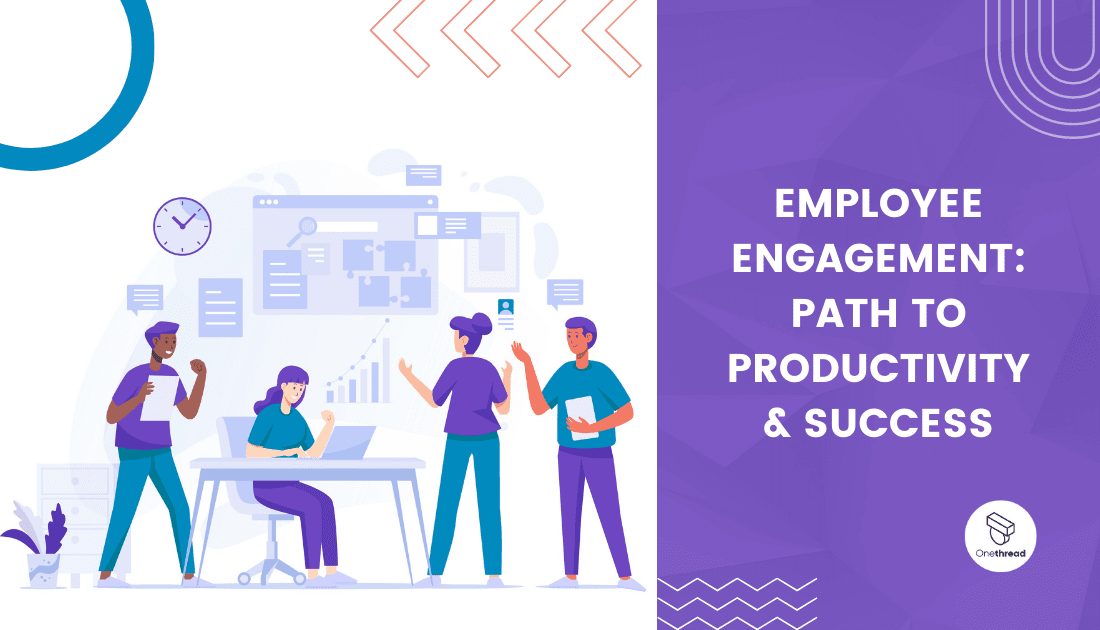Behind every extraordinary project, the driving force that turns time management into a well-choreographed symphony, and the magic wand that sparks productivity like never before – Employee Engagement! Picture this: a team that’s not just working but passionately thriving, each member radiating enthusiasm and commitment towards the shared mission.
Such teams are not born overnight; they are meticulously nurtured, fueled by a blend of purpose, empowerment, and appreciation. If you’re on a quest for the elusive elixir that transforms ordinary teams into a powerhouse of innovation and accomplishment, then you’ve come to the right place.
In this journey through the captivating realm of employee engagement, we’ll unravel the hidden gems that seamlessly merge project management, time management, and productivity into a symphony of success.
What Is Employee Engagement?
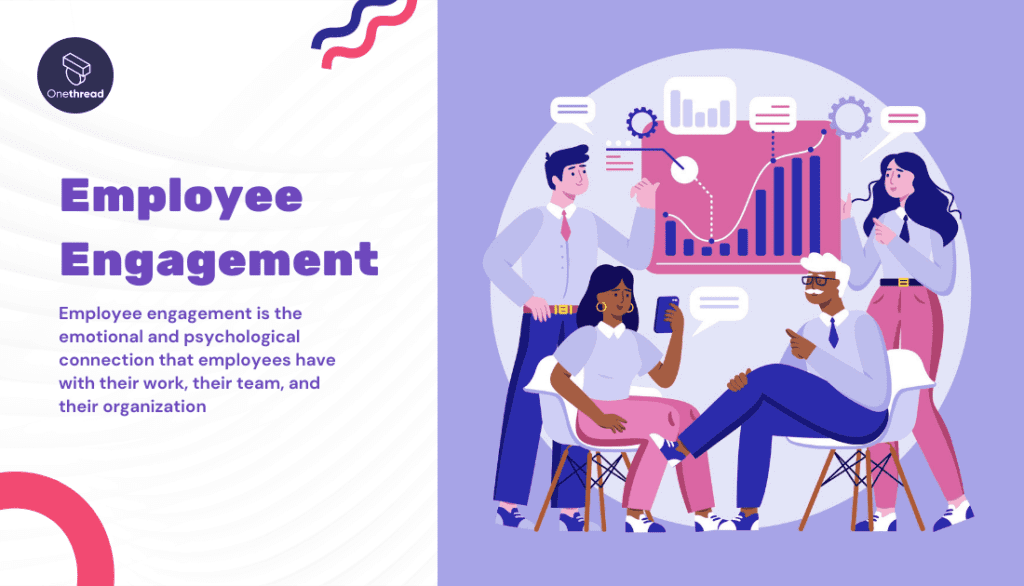
Employee engagement is the emotional and psychological connection that employees have with their work, their team, and their organization. It goes beyond the surface level of job satisfaction and delves into the realm of genuine commitment, enthusiasm, and motivation.
Engaged employees are passionate about their roles, actively seek ways to contribute, and feel a sense of purpose and belonging within the workplace.
At its core, employee engagement is about aligning the individual’s goals and values with those of the organization, creating a win-win scenario. When employees are engaged, they are more likely to invest their discretionary effort, going above and beyond their basic job responsibilities to achieve exceptional results.
This powerful connection between employees and their work has a significant impact on various aspects of an organization, including project management, time management, and overall productivity.
Engaged team members are more collaborative, better at managing their time, and consistently perform at their peak, making them an invaluable asset to any successful endeavor.
Furthermore, employee engagement is not solely dependent on external factors such as salary or benefits; it’s also shaped by the work environment, opportunities for growth, recognition, and the quality of relationships within the team.
In essence, employee engagement is the fuel that propels teams to surpass their limits, embrace challenges, and flourish in their professional journey. As organizations invest in cultivating this bond, they unlock a wealth of potential, ultimately reaping the rewards of higher productivity, enhanced innovation, and a positive work culture.
Why Is Employee Engagement So Important?

Employee engagement is of paramount importance in any organization due to its profound impact on various critical aspects of the workplace. This deeper level of commitment and enthusiasm from employees plays a pivotal role in driving organizational success. Here are several key reasons why employee engagement is so crucial:
Enhanced Productivity
Engaged employees are more motivated and invested in their work, leading to higher levels of productivity. They willingly go the extra mile to achieve organizational goals, consistently delivering top-notch results.
Improved Retention
When employees feel engaged, they are more likely to stay loyal to the organization. This reduces turnover rates and helps retain valuable talent, saving significant time and resources spent on recruitment and onboarding.
Increased Innovation
Engaged employees are more creative and proactive in generating fresh ideas and solutions. They feel empowered to share their perspectives, leading to a culture of innovation and continuous improvement.
Better Customer Service
Employee engagement directly impacts customer satisfaction. Engaged employees tend to be more attentive to customer needs, resulting in higher levels of service quality and customer loyalty.
Stronger Team Collaboration and Better Team Management
Engaged employees are more likely to collaborate and communicate effectively within their teams. This fosters a positive and cooperative work environment, promoting the sharing of knowledge and expertise.
Positive Work Culture In Your Organization
Employee engagement contributes to the development of a positive work culture, where employees feel valued, supported, and respected. This, in turn, attracts top talent and boosts overall organizational reputation.
Higher Employee Morale and View
Engaged employees experience a greater sense of fulfillment and job satisfaction, leading to higher morale across the organization. Positive morale translates into higher overall job satisfaction and employee well-being.
Reduced Absenteeism
Engaged employees are less likely to call in sick or take unnecessary leaves. Their commitment to their work and their team leads to improved attendance and punctuality.
Better Adaptability to Change
Engaged employees are more open to change and are willing to embrace new challenges. This adaptability is vital in today’s rapidly evolving business landscape.
Boosted Financial Performance
Research has consistently shown that organizations with high employee engagement outperform their competitors in terms of financial performance, making it a critical factor for long-term success.
How to Measure Employee Engagement?
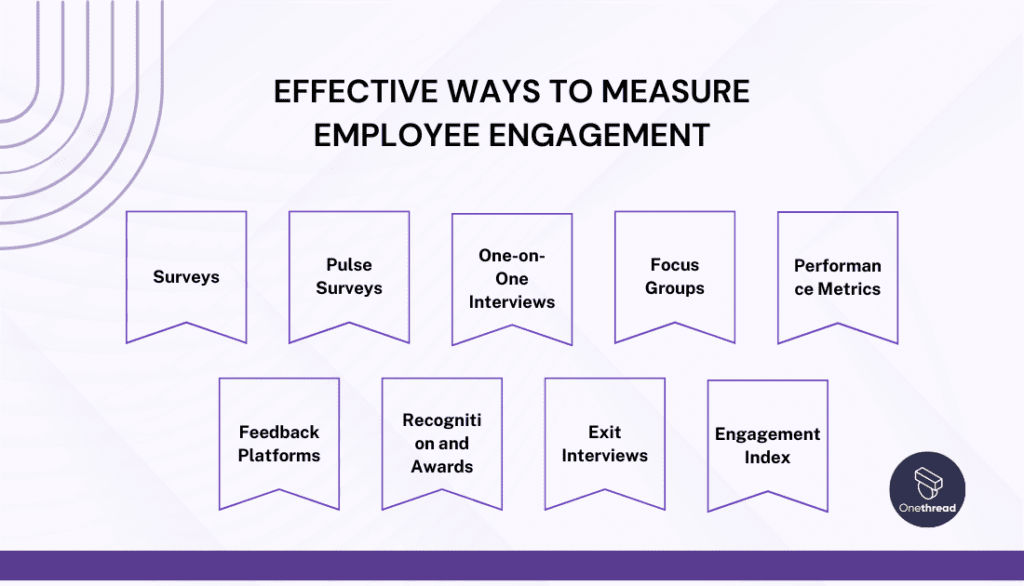
Measuring employee engagement is essential to understand the level of satisfaction, motivation, and commitment within the workforce. Several methods and tools can be used to gauge employee engagement. Here are some effective ways to measure employee engagement:
Surveys
Employee engagement surveys are one of the most common and valuable methods to gather feedback. These surveys include questions related to job satisfaction, work environment, career development, and overall organizational culture.
Using a combination of multiple-choice and open-ended questions can provide a comprehensive understanding of employee sentiments.
Pulse Surveys
Pulse surveys are short and frequent surveys conducted at regular intervals (e.g., monthly or quarterly). These surveys capture real-time feedback and offer quick insights into how employees are feeling about specific events, initiatives, or changes in the organization.
One-on-One Interviews
Conducting individual interviews with employees can provide deeper insights into their engagement levels. These interviews offer a more personal and detailed perspective on their experiences, challenges, and suggestions for improvement.
Focus Groups
Organizing focus groups with small groups of employees from different teams can be beneficial. These sessions encourage open discussions on various engagement-related topics and allow employees to share their thoughts and ideas in a collaborative setting.
Performance Metrics
While not a direct measure of engagement, monitoring performance metrics such as productivity levels, attendance, and turnover rates can indirectly indicate employee engagement.
Engaged employees tend to perform better, have higher attendance rates, and are more likely to stay with the organization.
Feedback Platforms
Implementing digital platforms where employees can share continuous feedback, ideas, and suggestions can provide real-time insights into their engagement levels. These platforms create a transparent and inclusive communication channel between employees and management.
Recognition and Awards
Monitoring the frequency and effectiveness of employee recognition programs and awards can provide insights into how well the organization acknowledges and appreciates its employees’ contributions.
Exit Interviews
Conducting exit interviews with departing employees can reveal valuable information about engagement issues within the organization. It can help identify areas of improvement and prevent future turnover.
Engagement Index
Creating an engagement index by combining different engagement-related metrics can provide an overall measure of employee engagement. This index can be tracked over time to assess changes and improvements.
What Are the 5 C’s of Employee Engagement?
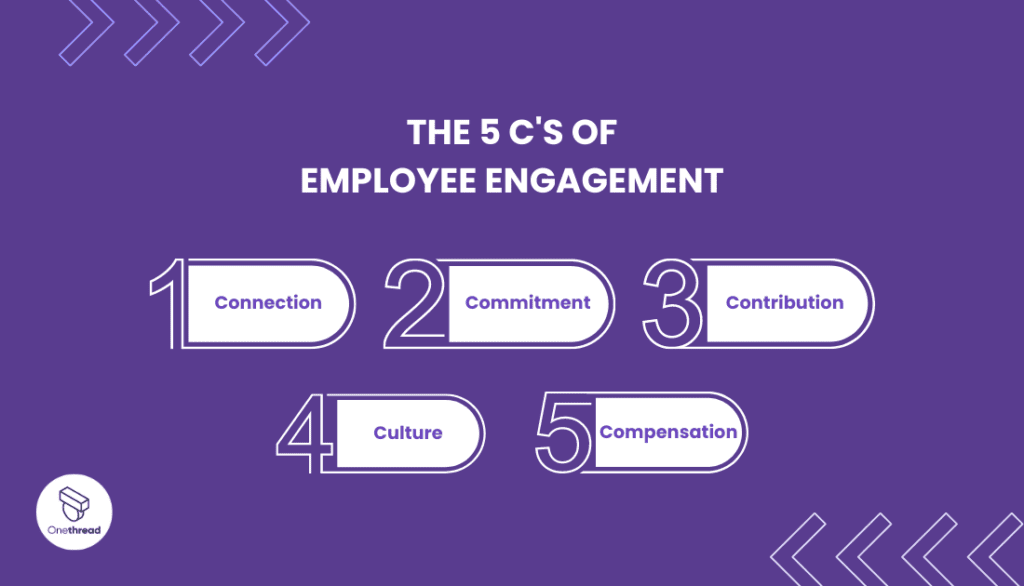
The 5 C’s of employee engagement are a set of principles that organizations can follow to foster a highly engaged workforce. These principles focus on creating an environment where employees feel connected, committed, and motivated to contribute their best efforts. The 5 C’s are:
Connection
Building a strong sense of connection is essential for employee engagement. This involves creating opportunities for open communication and feedback, fostering positive relationships between employees and their managers, and promoting a supportive and inclusive work culture.
When employees feel connected to their team and the organization, they are more likely to be engaged and invested in their work.
Commitment
Employee commitment refers to their dedication and loyalty to the organization’s mission and values. To promote commitment, organizations should provide a clear and compelling vision, set achievable goals, and offer meaningful work that aligns with employees’ skills and interests.
When employees feel that their contributions are valued and are part of a larger purpose, they are more committed to the task management and ensuring organization’s success.
Contribution
Recognizing and appreciating employees’ contributions is crucial for fostering engagement. Acknowledging their achievements, providing opportunities for growth and development, and empowering them to take ownership of their work all contribute to a sense of fulfillment and motivation.
When employees see that their efforts are making a difference, they are more likely to be engaged and strive for excellence.
Culture
The organizational culture plays a significant role in employee engagement. A positive work culture that promotes trust, respect, and fairness creates an environment where employees feel valued and supported.
Encouraging collaboration, celebrating diversity, and promoting work-life balance are essential elements of a healthy culture that fosters engagement.
Compensation
While employee engagement is not solely about monetary rewards, fair and competitive compensation is still a crucial factor. Employees need to feel that their efforts are recognized and appropriately rewarded.
Competitive salaries, performance-based incentives, team appreciation, and benefits packages contribute to employees’ sense of being valued and appreciated.
By focusing on the 5 C’s of employee engagement, organizations can create a work environment where employees are motivated, committed, and passionate about their roles. This, in turn, leads to higher productivity, better job satisfaction, and a stronger, more successful organization overall.
Employee Engagement Best Practices
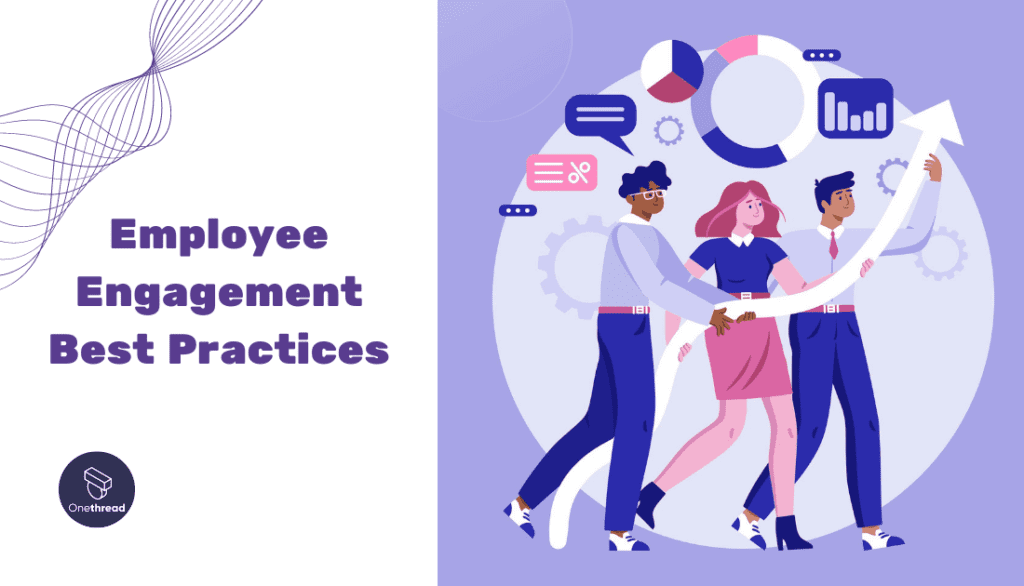
Boosting employee engagement is an ongoing process that requires a proactive and holistic approach. Here are some best practices that organizations can implement to foster a culture of high employee engagement:
Clear Communication to Keep Employees Engaged
Establish open and transparent communication channels. Regularly share company updates, goals, and progress with employees. Encourage two-way communication, actively listen to employee feedback, and address concerns promptly.
Recognize and Appreciate
Recognize and appreciate employee contributions regularly. Celebrate individual and team achievements to make employees feel valued and motivated.
Provide Growth Opportunities
Offer professional development and growth opportunities to employees. Support their career aspirations by providing training, workshops, mentorship programs, and opportunities for advancement.
Empowerment and Autonomy
Empower employees by giving them autonomy over their work. Trust them to make decisions and take ownership of their projects, fostering a sense of responsibility and accomplishment.
Work-Life Balance for Optimal Team Engagement
Promote a healthy work-life balance. Encourage employees to take breaks, use their vacation time, and avoid overworking to prevent burnout.
Flexible Work Arrangements
Offer flexible work arrangements, such as remote work options or flexible hours, to accommodate employees’ needs and preferences. Create an effective strategy to keep all the employees content and engaged. Use Gantt Charts, timesheets, and table views if necessary.
Team Building Activities
Organize team-building activities and social events to foster camaraderie and strengthen relationships among team members.
Provide Feedback and Growth Plans
Provide regular constructive feedback to help employees improve their skills and performance. Work together on individual growth plans to set clear goals and expectations.
Inclusive and Diverse Environment
Promote diversity and inclusivity within the organization. Ensure that employees feel respected and valued regardless of their background or identity.
Employee Wellness Programs
Implement wellness programs that focus on physical and mental health. Offer resources for stress management, mindfulness, and health-related initiatives.
Promote Collaboration
Encourage collaboration and teamwork across departments and hierarchical levels. Create a culture of support and cooperation.
Lead by Example
Managers and leaders should lead by example, displaying the values and behaviors they expect from any workplace employee. Authentic leadership fosters trust and loyalty.
Regular Performance Feedback
Conduct regular performance evaluations and provide your overall view and constructive feedback. Clearly outline expectations and guide employees to identify areas for improvement.
Engagement Surveys
Conduct regular team engagement surveys to gauge satisfaction and identify areas for improvement. Use the data to make informed decisions and develop action plans. Use a project management software if needed.
How Onethread Can Help You Improve And Maintain Employee Engagement?
Onethread is not just a project management tool; it’s also a catalyst for enhancing and maintaining employee engagement. Here’s how Onethread achieves this:
Streamlined Communication:
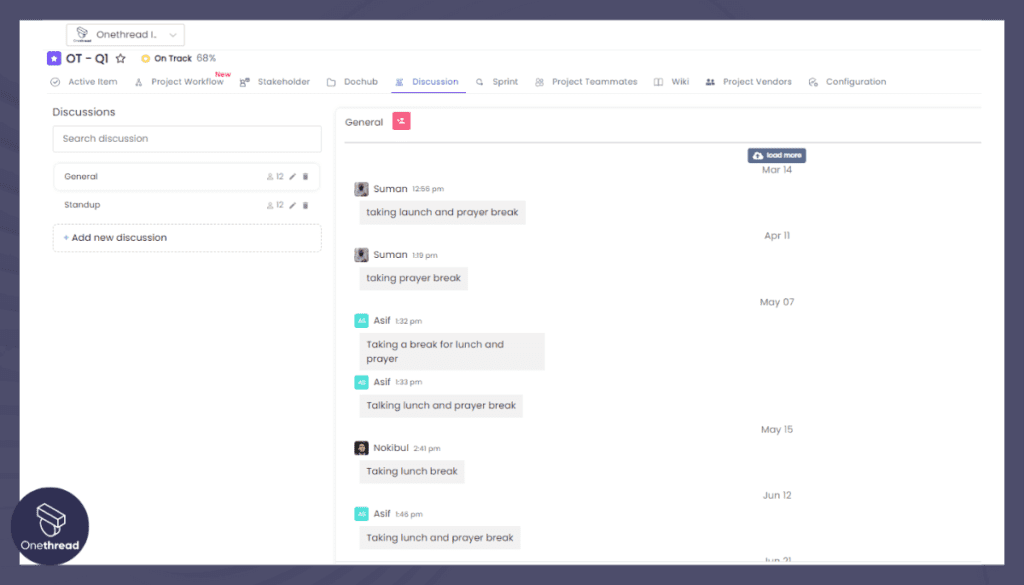
Onethread fosters transparent and efficient communication among team members. The real-time messaging feature ensures that employees can easily collaborate, share ideas, and ask questions, creating a sense of connectivity and inclusion.
Task Ownership and Accountability:
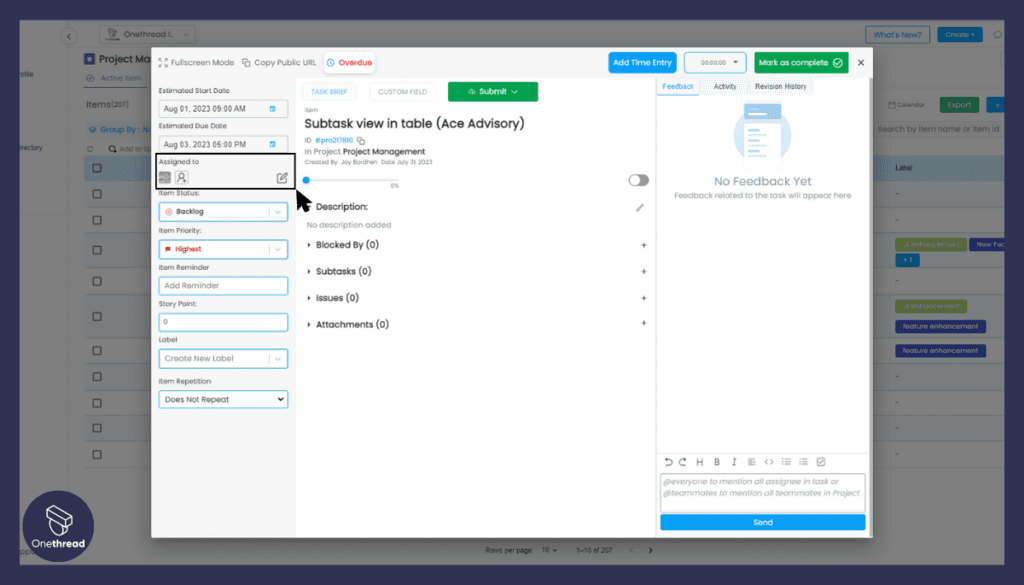
Assigning tasks and tracking progress using Onethread’s task management feature promotes individual ownership. When employees see their tasks and contributions making an impact, it instills a sense of purpose and commitment.
Recognition and Feedback:
Onethread provides a platform for giving and receiving feedback. Recognizing and appreciating employees’ efforts throughout the entire company using features like announcements not only boosts morale but also encourages continuous improvement.
Transparency in Project Management:
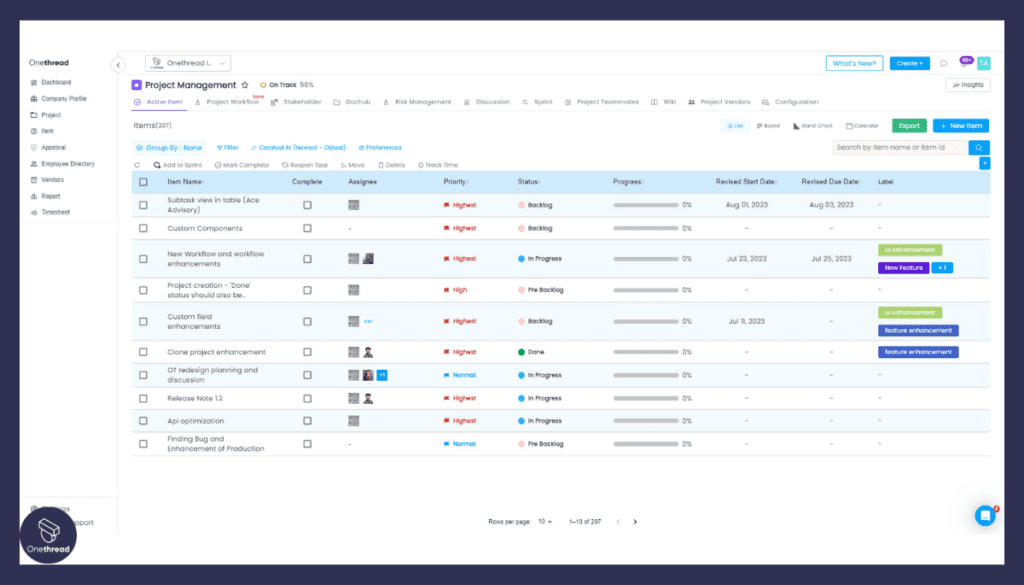
Transparent project management on Onethread ensures that everyone is aware of project progress, timelines, and individual responsibilities. This transparency reduces confusion and enhances engagement.
Combining these features and fostering a culture of open communication, accountability, and recognition, Onethread plays a pivotal role in improving and maintaining employee engagement. It’s not just a tool for managing tasks and projects; it’s a tool for creating a motivated and committed workforce, leading to increased productivity and overall success.
Bottom Line
As we reach the end of our exploration into the realm of employee engagement, it’s evident that its impact on project management, time management, and productivity cannot be overstated.
By recognizing the power of engaged employees and adopting strategies to boost their motivation and commitment, you lay the foundation for a resilient and high-performing team.
Remember, employee engagement is not a one-time endeavor; it’s an ongoing process of listening, adapting, and investing in your team’s well-being.
By fostering a culture of open communication, recognizing achievements, and offering growth opportunities, you can create an environment where each member feels valued, inspired, and eager to contribute their best.
